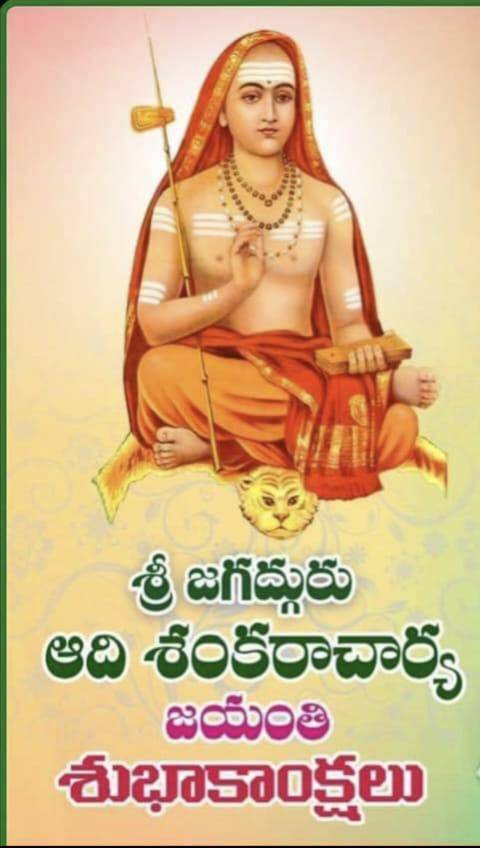[GHHF]Bala Samskara Kendras in Tirupati – Students learned about Adi Shankara, hislife, and his achievements.
 Jean-Pierre Lehmann
Jean-Pierre Lehmann
“The planet needs quite desperately a sense of moralorder, spirituality, and an ethical compass. The Indian religious andphilosophical traditions can provide a great deal of all three. It was in arecent conversation with an Indian religious guru that I was also pleased todiscover I could adhere to his religious tenets while maintaining my secularconvictions. No imam or priest would allow me that.”
We all have heard this sloka, even from our childhood. Whendharma (righteousness) abandons its followers, because they have ignored it,and adharma (villainy) quickly fills its place, God is obliged to intervene.(Bhagavad Geeta 4:7,8). He may do so by directly descending or by sendingcertain chosen persons to restore the balance. Such was the time when AdiSankara was born.In Bharat, it was a critical period for the Vedic religion,which badly needed a true and staunch follower to restore its former glory.During the period preceding Sankara, the SANATANA-DHARMA,(the Ancient and Eternal - dharma, now commonly known as Hinduism) based onVedas, was facing stiff opposition. At such a time Sankara was born, to accomplish such feats which only an Avatarapurusa can accomplish.Over some time now, a similar type of upsurge and attack, weare experiencing in Bharat, towards Sanatana Dharma, and more so theHindu religion.
There is a need to plan out a number of strategies tohelp the Hindu population to understand the present events happening around. It is necessary to learn about motivators and take good cues. What couldbe better than catching the young minds and telling them about the richheritage of scholars and saints we have in our heritage?Adi Sankara was an 8th-century great philosopher and saint, the most renowned exponent of the Advaita Vedanta school of Philosophy, fromwhose doctrines the main currents of modern Indian thought are derived.
The most widely accepted year of his birth is 788 AD. Sankara was born to a deeply pious couple Aryamba and Sivaguru belongingto the Namboodri caste, in Kaladi in Kerala state, India.Sankara was extraordinarily brilliant and mastered all thesastras (spiritual scriptures and other treatises) at a young age. He decidedto renounce the world and become a sannyasin (ascetic), theonly impediment was his mother's love, she was not willing to give permission. By doing of fate, this came sooner. One day when he wasbathing in river Purna, a big crocodile caught him. As he was strugglingfor life, he appealed to his wailing mother standing on the bank, to give himpermission to take sanyasa and die in peace. She had no other alternative butto oblige. The crocodile left him mysteriously as it had caught him. Most unwillingly his mother permitted him to take Sanyasa, with a riderthat he should be beside her at the time of her death.
He was eight yearsat that time. We thus infer the human aspect of his personality and the dutyof the son to his mother.After being initially the keen disciple ofGovindabhagavatpada and undergoing three years of vigorous training, Sankara wascommanded to go to Kasi (now Varanasi), the heart of all learning - sacredand secular.He remained here for some time preaching the doctrines of Advaitha and gathering a number of disciples. Moving North, he renovated the pilgrimage temple atBadrinath and instituted modes of worship. Later moved South, vanquishingand redirecting many scholars, amongwhom the greatest was Mandana Mishra.
Tharka sastra was the philosophy ofdialects, logic, and reasoning to establish the source of knowledge and validity. His literary works include: Famous commentaries (bhashyams)on 10 Upanishads, the Brahma Sutra, and the Bhagavad Gita; poetry compositions such as Vivekachudamani,Maneesha Panchakam, and Saundaryalahiri, are among them; KanakadharaStotram, a shower of golden amlas descended, bringing prosperity to the poor,old woman; wrote works such as Upadesasahasri,Vivekachudamani, and Bhaja Govindum Stotra. He established mutts in Dwarka, Puri,Sringeri, and Badrinath.
Another Matta established was atKanchipuram.During his sojourn, he firmly re-established Vedicreligion through written works, vigorous propaganda of its principle, and leavingbehind illustrious disciples and religious (monastic) institutions. By putting a stop to tantric and bizzarè practices, carriedby certain sects and cults, he converted the notaries to pure ways of life andsaved society. This restored Vedic religion to its pristine glory and made themmore people-oriented.In our effort on SANATHANA DHARMA, let us be motivated bythis great Jagadguru. Let us pray and remember him on the auspicious dateof Sankara Jayanthi, which falls on the Panchami Tithi during theShukla Paksha in the month of Vaishakha. This year it is on 25th April 2023.
DONATIONS
PayPal Method: To donate visit our website: savetemples.org. Click onthe Donate button, then press the Purpose category, and select the GeneralDonation category.
By Check: Or you can send a check payable to GHHF, 14726 Harmony Lane,Frisco TX 75035; It istax-deductible.
By Zelle: ghhfusaorg@gmail.com
Rupees, please contact us by either phone oremail.
For more information, call Prakasarao V Velagapudi at 601-918-7111; Email: ghhfusaorg@gmail.com





















 Urgent support needed for Bangladesh Hindus
Urgent support needed for Bangladesh Hindus 







